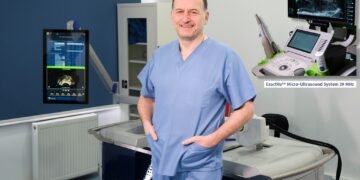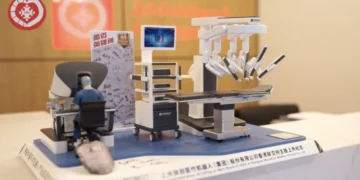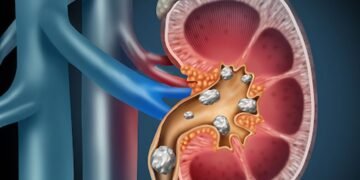There are gynecological pathologies that cannot be treated with medication and are, therefore, solved by surgery. In such cases, proper planning and technique are very important.
What gynecological surgeries are performed more often, in which cases reconstructive methods are used, what pathologies should be treated surgically? These and other questions will be answered by David Karsimashvili, Head of Gynecology at MMT Hospital, leading specialist, oncogynecologist, surgeon-endoscopist. Mr. Karsimashvili is distinguished by his high professionalism, great practical experience and delicate treatment of his patients.
For what pathologies are gynecological surgeries performed?
Such pathologies can be divided into several categories:
- Benign uterine tumors. The most common benign pathology is uterine myoma (leiomyoma, fibroid). Indications for surgical intervention: large size, fast-growing nodes often accompanied by pain, as well as nodes that grow in the uterine cavity (submucosally) and cause bleeding.
- Nodules on the myoma pedicle, due to myoma twisting or a trophic disorder, are indications for surgery. Surgical treatment is divided into radical and organ sparing operations. Women who want to preserve their reproductive function (childbearing) undergo an organ sparing operation, i.e. only the nodules are removed, while older patients have their uterus completely removed. Surgeries are performed either through an abdominal incision or laparoscopy (endoscopic method). Most operations are performed using the laparoscopic method, although we also make the abdominal incision when indicated. Removal of internal nodules in the uterus is done by hysteroresectoscopy. A special apparatus enters the uterine cavity and a myoma nodule is cut out purposefully under visual observation.
- Ovarian cysts: dermoid and endometrioid cysts larger than 4 cm; surgical intervention is required if the pedicle is twisted or the integrity of the capsule is compromised, with bleeding. Small-sized cysts are not operated on. During the operation of an ovarian cyst, the surgeon must try not to damage healthy tissue of the ovary.
- Malignant tumors, among which tumors of the uterine body, cervix and ovary are common. A timely and correct diagnosis of a malignant tumor is crucial because the patient can be almost completely cured if the pathology is detected at an early stage and the surgery is performed correctly.
When is reconstructive intervention necessary?
Mostly for prolapse, when the vagina and the uterus are completely or incompletely prolapsed and we want to return them to their natural position. If a woman is of childbearing age and wants to preserve her childbearing function, an operation with preservation of the organs is performed; if she is not of reproductive age and there are indications for the removal of the uterus, a radical operation is performed.
Every patient needs an individual approach, and only then do we decide whether the surgery will be laparoscopic or vaginal. We examine the patient in advance, rule out oncopathology and plan the operation. Laparoscopic promontofixation is considered to be the best practice for prolapse. As a rule, patients under 60 are retain the ovaries, because they are known to have an important endocrine function for the female body.
If there are no contraindications (a pathology, genetically aggravated diagnosis), we leave the ovaries and amputate the uterus by laparoscopy, perform dissection of the bladder and the large intestine. Then we fix one end of the synthetic mesh to the anterior vaginal wall, the cervix, the posterior vaginal wall and the pelvic floor muscles, and attach the other end to the sacrum.
The advantage of this method is that it preserves the natural position of the vagina and cervix better, and there is virtually no recurrence of prolapse – the chances are negligible. Patients very often insist on removing everything, but this is not the case. Often the vaginal wall prolapses along with the uterus, so removing only the uterus will not solve the problem, even more, the prolapse can become deeper.
With the mesh, the risk of suppuration must be minimized, and complications must be carefully managed. After all, a synthetic mesh is extraneous to the body, so there is always a risk of infection and suppuration. There is a high risk of mesh infection when the cervix is removed and the vagina is stitched, so we leave the cervix and sew the mesh on top. We thoroughly explain to the patient the purpose of the surgery and all possible complications.
What surgeries are performed for urinary incontinence?
Stress incontinence is very common when a woman sneezes or coughs and spills urine. In this case, there are two surgical options. The first is a TVT or TOT procedure, which is done vaginally. A synthetic mesh is inserted between the front wall of the vagina and the ureter, which creates a fixation mechanism (a sling). Under stress (sneezing, coughing, etc.) the ureter is pressed to the mesh, and, accordingly, involuntary spillage of urine will not occur. The second option is the Burch procedure: the vaginal wall is sewn on and attached to the pubis. Such an intervention can be performed either by laparoscopy or by abdominal incision. Urinary incontinence can be not only stress-related – it can also be urogenital. Causes of this disease include urogenital infections, tumors, neurogenic lesions, etc. There is also mixed incontinence – both stress and urogenital incontinence.
Interviewed by Tinatin Gotsadze.











